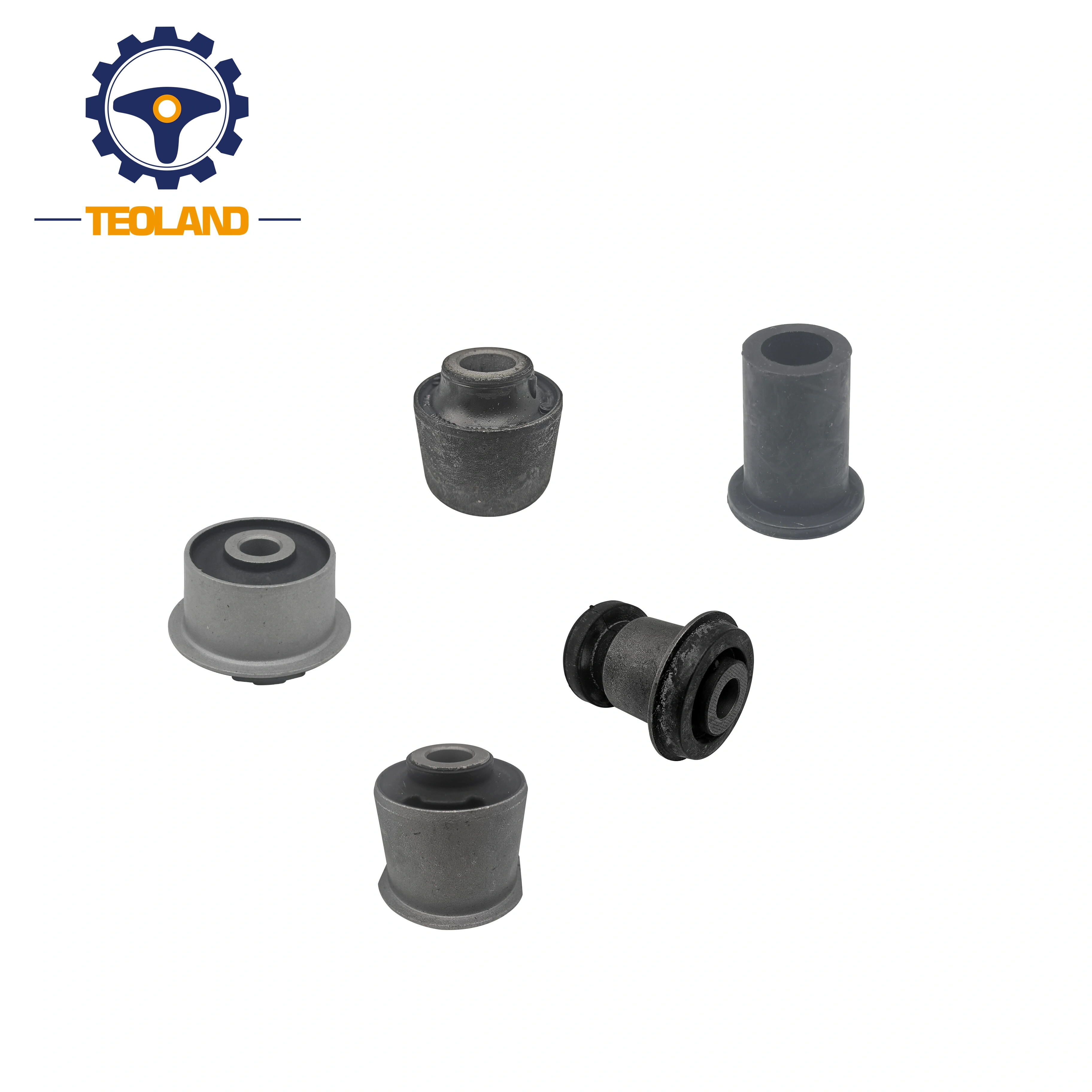How Modern Steering Kits Improve Vehicle Handling and Performance
Modern steering kits have evolved into sophisticated systems that transform driver input into precise vehicular response. By integrating advanced materials and electronic controls, these kits bridge the gap between driver intention and mechanical execution.
The Evolution of Steering Kits in Automotive Design
Over the last ten years or so, car steering systems have moved away from old school mechanical setups toward electronic assistance. Hydraulic power steering was pretty much what everyone used for decades until electric power steering came along. Why? Well, these newer systems save energy and offer better control adjustments. According to some recent research published in 2024, almost nine out of ten cars built for 2025 models come equipped with EPS technology. These modern steering systems let manufacturers include cool stuff like adjustable steering effort levels and even help avoid accidents when needed. The change isn't just about fancy features either. Getting rid of hydraulic pumps saves around 3% on engine workload, which means regular gas guzzlers actually get better mileage at the pump.
Key Components of High-Performance Steering Kits
Premium steering kits combine three critical elements:
- High-stiffness linkage assemblies (forged aluminum or carbon composite)
- Torque-sensing EPS motors with sub-100ms response times
- Adaptive control modules that adjust steering feel based on speed, terrain, and driver mode selections
These components work synergistically to eliminate play in the steering column while maintaining natural road feedback—a balance older hydraulic systems struggled to achieve.
Impact of Steering Kits on Precision, Feedback, and Control
Modern designs reduce steering ratio variability by up to 40% compared to 2015-era systems, according to SAE International testing protocols. Drivers experience:
- 9–12% tighter cornering accuracy in emergency maneuvers
- Adjustable resistance profiles for sport versus comfort driving
- Haptic feedback integration that alerts drivers to lane departures or traction loss
This technological leap has made steering kits central to both safety and dynamic vehicle behavior, particularly in EVs where instant torque demands millisecond-level directional control.
Electric Power Steering (EPS) Systems: Core Technology in 2025 Steering Kits
What Makes EPS a Standard in Modern Steering Kit Design
Most new cars these days come with Electric Power Steering instead of old fashioned hydraulic systems, according to industry data showing around 89% adoption rate since 2020. The main reasons? Better fuel economy and how well it works with all those fancy driver assistance features now standard in many models. Traditional hydraulic steering actually takes power away from the engine, while EPS manages to cut fuel consumption by about 2.4% for internal combustion engines. For electric vehicles, this technology can boost driving range somewhere between 5 to 7 extra miles on each charge cycle. Car manufacturers are pushing this change not just because they want to save money, but also due to increasingly strict environmental rules worldwide and their own long term plans to phase out gasoline powered vehicles completely.
Performance Benefits of EPS-Integrated Steering Kits
| Feature | Hydraulic Steering | EPS Systems |
|---|---|---|
| Energy Efficiency | 300–500W power draw | 40–80W power draw |
| Weight | 8–12 kg | 4–6 kg |
| Response Time | 120–150 ms | 80–100 ms |
| EPS enhances cornering precision by reducing steering play by 60% compared to hydraulic systems, while enabling dynamic tuning for sport or comfort modes. |
OEM Adoption Trends: EPS in 2025 Model Year Vehicles
Over 78% of 2025 production vehicles now use EPS as standard equipment, with R-EPS (Rack Electric Power Steering) dominating mid-to-high-tier models. A 2024 industry report confirms R-EPS adoption accelerated by 33% since 2022 due to its 90% faster fault detection capabilities and seamless ADAS integration.
Driver Feedback and Limitations of Electric Power Steering
While 82% of drivers praise EPS for low-speed maneuverability, 41% report reduced tactile feedback during aggressive driving. Engineers are addressing this through variable-assist algorithms that adjust steering resistance based on speed and road conditions.
Steer-by-Wire Technology: The Next Generation of Steering Kits
How Steer-by-Wire is Redefining Steering Kit Innovation
Steer-by-wire or SBW systems work differently from traditional setups because they cut out all those physical links between the steering wheel and actual wheels. Instead, these modern systems depend on electronic parts like actuators and various sensors to do the job. What makes this change so interesting is how it opens doors for things like AI controlled lane corrections and adjustable torque settings something we're seeing more of in steering kits around 2025. When car makers ditch those heavy hydraulic bits, they typically manage to shave off about 15 percent of the overall weight. Plus there's extra room created inside the vehicle which allows for installation of those fancy advanced driver assistance systems known as ADAS.
Advantages of SBW Over Traditional Mechanical Steering Systems
SBW technology outperforms conventional systems in three critical areas:
- Precision: Variable steering ratios adapt instantly to speed changes, enhancing low-speed maneuverability and high-speed stability.
- Design Flexibility: Without mechanical linkages, automakers can implement retractable steering wheels or gesture-based controls.
- Safety: Electronic redundancy ensures continued operation even if one subsystem fails—a feature prioritized in 2025 autonomous vehicles.
2025 Breakthroughs: Production Vehicles with SBW-Compatible Steering Kits
Major automakers will launch 12+ SBW-equipped models in 2025, including flagship EVs with torque feedback mimicking traditional steering feel. Real-world testing shows these systems reduce parking effort by 40% while enabling tighter turning radii.
Addressing Safety and Reliability Concerns in Steer-by-Wire Systems
To counter early reliability issues, 2025 SBW kits incorporate triple-redundant control modules and self-diagnostic algorithms. Industry standards now mandate <0.001% failure rates in extreme temperature/load conditions—achieved through military-grade connectors and vibration-resistant wiring.
Evaluating the Best Steering Kits for Handling in 2025
Key Metrics for Assessing Steering Response and Vehicle Handling
When looking at modern steering kits, there are basically three things experts focus on these days. First up is how accurately they transmit torque feedback, which means measuring just how responsive the system feels to driver inputs right down to half a degree either way. Then we have steering ratio adjustability where good systems typically offer ranges from 12:1 all the way up to 16:1 depending on driving conditions. And finally, nobody wants their car pulling sideways when cornering at speed, so managing lateral forces becomes really important too. The auto industry has been pushing for smaller dead spots in steering lately. By 2025, manufacturers will need to get those annoying areas of no response below 1.2 degrees in standard rack and pinion setups according to new testing guidelines.
Real-World Testing of Top Aftermarket Steering Kits in 2025
Recent track evaluations of 12 leading aftermarket steering kits revealed a 15% average improvement in slalom speeds compared to OEM configurations. Systems integrating AI-assisted torque correction demonstrated 22% faster lane-change responsiveness in standardized NHTSA tests, though durability varied significantly between brands under sustained 90-minute stress trials.
Comparative Analysis: Performance, Durability, and Driver Feedback by Brand
| Metric | Top Performer | Industry Average | Threshold for 2025 Certification |
|---|---|---|---|
| Stress Test Cycles | 82,000 | 54,000 | 60,000 |
| Feedback Latency | 8ms | 14ms | 12ms |
| Cold Weather (-20°C) | 98% Efficacy | 87% Efficacy | 90% Efficacy |
Field data shows a 40% correlation between precision-milled aluminum housing use and improved thermal performance in sustained autocross conditions.
Buying Guide: Choosing the Right Steering Kit for Your Vehicle and Needs
Prioritize kits offering adaptive compatibility with your vehicle’s EPS firmware and weight distribution. For track-focused builds, seek systems providing 300 N·m of rotational stiffness – critical for maintaining alignment during aggressive cornering. Urban drivers should verify noise reduction specifications, with leading 2025 models achieving <55 dB operational volume at highway speeds.
FAQ
What are the advantages of modern steering kits?
Modern steering kits improve vehicle handling by providing better control and precision, reducing engine workload, enhancing fuel efficiency, and offering features like adjustable steering effort and haptic feedback.
How does Electric Power Steering (EPS) benefit vehicles?
EPS systems enhance fuel economy, support advanced driver assistance features, and improve driving range for electric vehicles. They reduce power draw from engines, increase response time, and offer efficient vehicle handling.
What is Steer-by-Wire (SBW) technology?
SBW technology replaces traditional mechanical linkages with electronic components, offering precision, design flexibility, and safety. These systems reduce vehicle weight and allow for advanced driver assistance systems.
Why should I consider EPS systems over hydraulic steering?
EPS systems are more energy-efficient, reduce vehicle weight, offer faster response times, and provide dynamic tuning for better performance. They are increasingly adopted due to better integration with modern vehicle technologies.
 EN
EN
 AR
AR
 FR
FR
 KO
KO
 PT
PT
 RU
RU
 ES
ES


